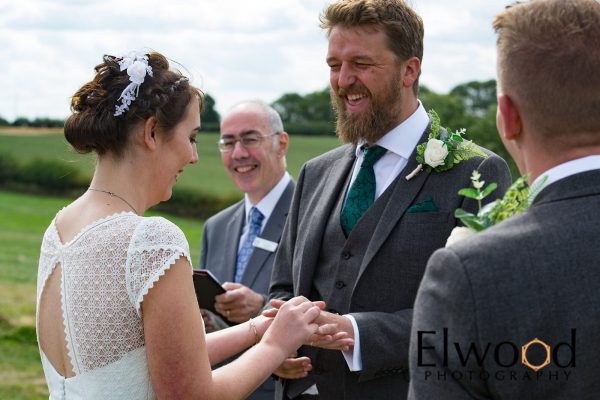
by Michael | Mar 22, 2022 | Blog
I’m bound to start with “it depends”, aren’t I?!
Do you get value for money when you engage a civil celebrant? Well, how much are you paying, for a start? How can you be sure that your supplier will provide what is wanted? What value do you put on a bespoke ceremony, impeccably delivered? Why bother with a Civil Celebrant in the first place – what’s wrong with DIY?
DIY
Let’s take the last point first.
Doing it yourself can work out. It’s obviously cheaper getting an amateur to compile and conduct the ceremony, but the key could be in the word “amateur”.
It’s quite a challenge to understand what is required, what the couple’s vision might be. Then choosing readings that are appropriate is not the easiest thing in the world. Finally, projecting and delivering a meaningful, memorable ceremony on the day is not something everybody can successfully do.
A civil celebrant will be trained to do all these tasks and, with luck, will have experience of the whole process. They take pride and pleasure in doing a good job. They are also aware that their reputation as a professional is at stake.
The Offering
So what can they offer you, and how much can you reasonably expect to pay?
Again, “it depends”!
The celebrant will consult with you and ask questions (as well as answer them). They will endeavour to eke out your vision for the day so that they can include the most suitable elements. These may include rituals such as a wine ceremony or handfasting, but there is a huge variety available.
They will suggest and advise what might work best and what, if anything, to be wary of.
Celebrants will discuss the processional (entry) and exit, music, readings, choreography and participants. They will offer guidance with the preparation of the vows.
After agreeing the ceremony order and content with you, the celebrant will know what to do on the day itself. Experience will be invaluable, especially when checking that everything is prepared beforehand and calming the nerves of all concerned.
Finally, the celebrant’s presentation skills will make all the difference to the actual ceremony.
To some extent, you get what you pay for. The amount charged may fluctuate depending on how complicated the work is likely to be. I might charge more for a foreign language ceremony, as I would have to put in quite a bit of extra work to get it perfect.
Whatever the quote, be sure you understand what is included. Is travel extra, for example?
Some celebrants will ask over £1,000 for the whole thing; others may barely charge half of that. So how can you judge which will give better value? I think the answer also depends!
If you’ve seen the celebrant in action or you know somebody who has worked with them, then you’ll have a feel for them. Otherwise, start at the website (including testimonials) and see if the celebrant appears to be on your page. Whatever you do, have a call (face-to-face, zoom or even just by phone), so you can see if you like the celebrant. Ask plenty of questions. Do they listen to you and understand what you have in mind?
Most civil celebrants are professionals in the best meaning of the term. This one would love to make a real difference to your big occasion, and you have only to contact me to set the wheels in motion.
photo: www.elwoodphotography.co.uk
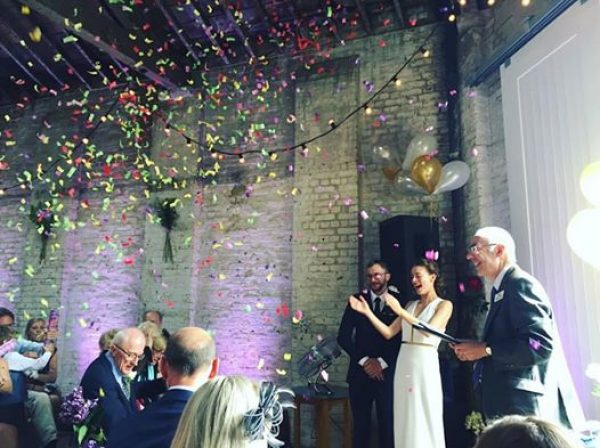
by Michael | Apr 13, 2018 | Blog
Your big day should be exactly that. So you should have the major input into who does what, where and when. It is your day, after all.
Religious
Why have your wedding in Church just because your parents insist? Religion may mean little or nothing to you. Moreover, you may prefer a rather less regimented affair.
Register Office
Most people assume that the only alternative is a Register Office wedding. If we’re honest about it, there’s something of the conveyor-belt about that. It can be sterile and mundane. Certainly not a very special or memorable way to mark your big day!
There is another path. How about this for an idea?
Another path
Make an appointment and go to the Register Office. It could be in the morning of your big day or the day(s) before. Turn up in your jeans, if you want, with two witnesses, and have the legal bit done. Then, afterwards, with the legal formalities over and done with, enjoy a celebrant-led ceremony in the venue of your choice. And when I say “of your choice”, you can actually be quite creative.
Venue
Climate may play its part, especially in the UK, but outdoors (gardens, beaches, moors) is certainly an option. So are stately homes, boats and plush hotels or more modest, but characterful, venues.
Celebrant
If you work with a celebrant, you can construct a wonderful ceremony. There may be no religion in it or just a dash (to keep the more conservative guests happy!) or even a combination of cultural religious elements.
You can decide what readings or poems to put in – and who is going to read them. The music programme is down to you, as is the dress code. Again, working with the celebrant, you can choose to have certain rituals included (maybe a handfasting, or drinking from a Loving Cup, or burning a Unity candle, for example).
So you and the celebrant can build a most meaningful and unforgettable ceremony that guests as well as you will remember and treasure.
You really don’t need to have the wedding you don’t really want!
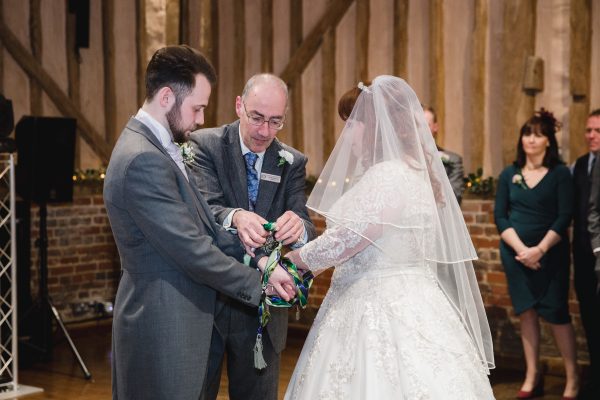
by Michael | Mar 7, 2018 | Blog
If you’re looking for a personalised wedding ceremony, you might like to include a ritual. It can make such a difference.
“Ritual” may possibly sound a bit too religious for some, but it could be something as simple as both drinking from a Loving Cup, or presenting parents with a red rose.
You may never have considered a handfasting ceremony. Actually, you may not have heard of one, either!
Assuming that you are basically unfamiliar with a handfasting, here is a bit of information that may clarify things.
Example of a handfasting

Photo: louiedonovanphotography.co.uk
Briefly, and simply: the couple take each other’s hands – left in left, and so on. The celebrant ties their wrists together and says suitable, beautiful words. After a while, the hands are untied.
In its simplest form, that is a handfasting.
Incidentally, this ritual is the origin of the expression “tying the knot” and indeed “bonds of holy matrimony”.
Origins
The ceremony probably originated in Celtic times; however, it flourished in Europe until the mid 1700s. Up till then, few unions were sanctified in a religious building like a church. Rather, they were celebrated by a simple handfasting ceremony in which the two partners joined hands over the village anvil, in the fields or in the groves of trees. Today, we build upon this tradition.
The basics
The couple link and cross hands (normally right hand to right, and left to left) to form an infinity circle. Then, with a cord or ribbon (or ribbons), the wrists are symbolically tied and knotted, in a lovers’ knot.
The cords are then removed with the knots still in place. The couple will take the cord away with them and, ideally, it will be a permanent reminder of their vows.
Where does this happen?
Again, it depends, but many people prefer a quiet, open-air historic site that may be considered to be spiritual and preferably pagan – such as standing stones.
What about Stonehenge?
A civil celebrant, such as myself, can conduct a handfasting wedding or vow renewal in the Inner Circle at Stonehenge (normally around dawn or dusk), but this needs to be booked months in advance. However, places like Avebury, Old Sarum or the Rollright Stones might be more practical.
A handfasting can comprise an entire ceremony in itself, but is often one element among many.
Breaking the Glass
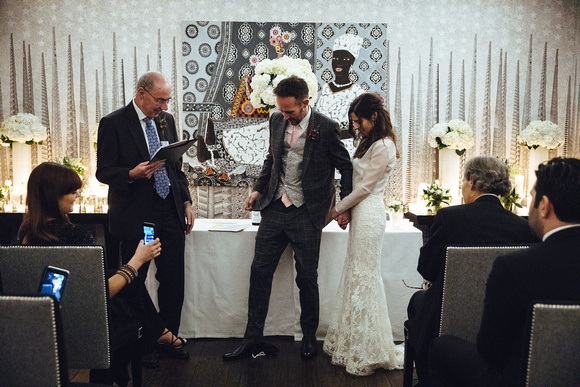
Photo: www.lyndseygoddard.com
Originally Jewish, this ritual is growing in popularity. There are many explanations for this. For example: it can recall the destruction of the Jerusalem Temple; serve as a symbolic reminder that things do break; and I have even heard that it is meant to be the last destructive thing to happen in the marriage.
Come what may, everybody enjoys shouting “Mazal tov!” when the deed is done!
Your civil celebrant will be able to help you learn more about rituals. Why not take advantage?
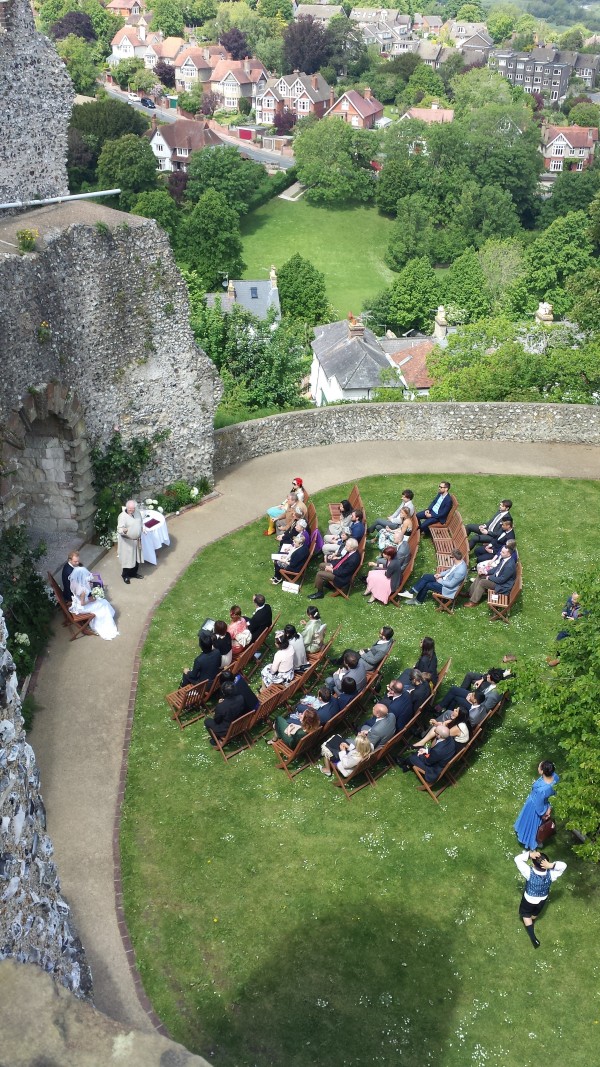
by Michael | Jan 16, 2018 | Blog
Just imagine for a moment …
What if a full religious wedding doesn’t rock your boat?
What if the secular, standard, certificate-signing at a Register Office doesn’t excite you either?
But what if you could go to the Register Office in the morning or the day before in your jeans, with a couple of witnesses?What if you signed the marriage certificate and then enjoyed a wonderful, joyous ceremony in the afternoon with all your guests?
Because you can.
With the help of a celebrant.
As long as the legal bit is still carried out, there’s nothing to stop you holding the ceremony you actually want – at the venue you want.
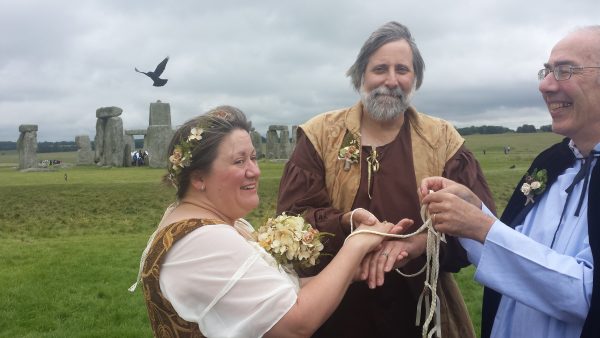
The Ceremony
One of the beauties about a celebrant-led wedding is that he or she will help you (as much or as little as you want!) to build your own ceremony. So if you want a religious component (even taken from various cultural sources), or a mixture, you can put it in; if you want spiritual elements, just go for it; poems and texts are absolutely OK. With some give and take, this way you can please yourselves AND keep your parents happy!
As well as the readings, you decide on the music. You also have the last word on the choreography (who walks or stands where), readers, the wording, and delivery, of the vows. Don’t worry, if that sounds off-putting. Your celebrant will be pleased to advise and make helpful suggestions. This process, usually conducted by e-mail, can go on over the course of several months.
Ritual
You will be able to incorporate any rituals and little touches that would not previously have been possible, if you so wish. For example, drink from a loving cup, burn a Unity Candle or have a handfasting (an ancient Celtic betrothal ritual).
Conclusion
In short, this is YOUR day, and your celebrant, who will of course conduct the ceremony for you, will do everything to ensure that the day is unforgettable, meaningful and what YOU want.
You only have to imagine (and get in touch!)!
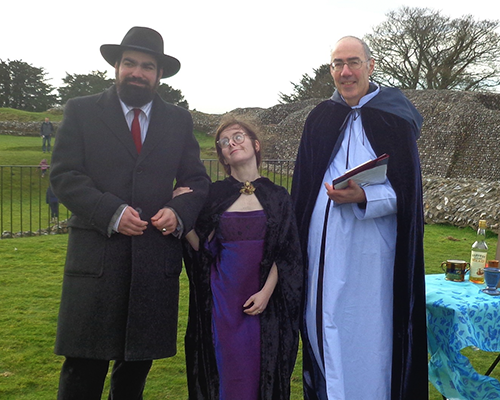
by Michael | May 26, 2015 | Blog
Judging by the questions I get asked, a lot of people really don’t know what a handfasting is. I therefore hope it will be helpful if I say a few words about it. It forms a central part in pagan ceremonies, but is often chosen as a colourful “extra” in a traditional wedding.
It may be something you would like to consider.
History
Handfastings originated in Celtic times, but began as a marriage rite in the Middle Ages. When peasants married, they might have been unable to afford a clergyman’s fee to hear their vows or a ring to signify their love. The ritual of handfasting became a popular alternative.
A cord was wrapped round the wrists of the couple and left on them until their union was consummated. It would usually be kept afterwards as a tangible reminder and proof of their commitment and love.
This ceremony has, of course, given us the expression “tying the knot”.
Present-day Ceremony
Nowadays, the cord symbolises the pair’s mutual love. The way a handfasting can be slipped in to a traditional-type wedding is as follows, although this is only a suggestion, and it will be different for a full pagan ceremony.
- Walking down the aisle to be given away by the father
- Officiant welcome
- Address about the meaning of love (possibly from a religious slant, if that’s wanted)
- Optionally, the couple’s ‘story’
- Here, or after the Handfasting, or at both times, a song or a reading/poem
- Handfasting
- Possibly, a Unity Candle, Sand Ceremony or Chalice ritual
- Exchange of Rings/Vows
- Jumping the Broom (not actually pagan, but deriving from wedding ceremonies conducted by slaves in the American South), now used to symbolise sweeping in the new as the new home is created
- Concluding words
Thoughts
As a celebrant, my favourite handfasting was part-pagan, part-Jewish containing rituals from both sides. Of course, I explained the symbolism for those unfamiliar with the other’s practices, so everyone could understand, and this worked really well to create a warm atmosphere. For example, the bride walked round the groom seven times while the groom recited his wife’s virtues (Jewish tradition), before we did the pagan handfasting.
It was a totally unique occasion – absolutely perfect for the couple and – clearly – for the guests too.
It’s something your civil celebrant will be able to advise you about.
If you want to add extra sparkle and personality to your big day, you could do a lot worse than try a handfasting.







